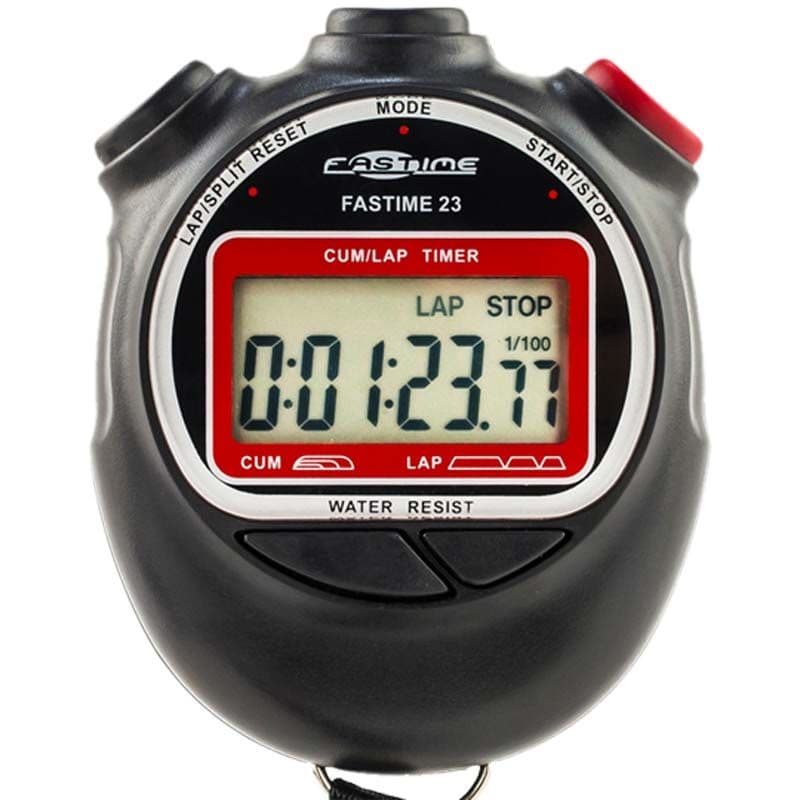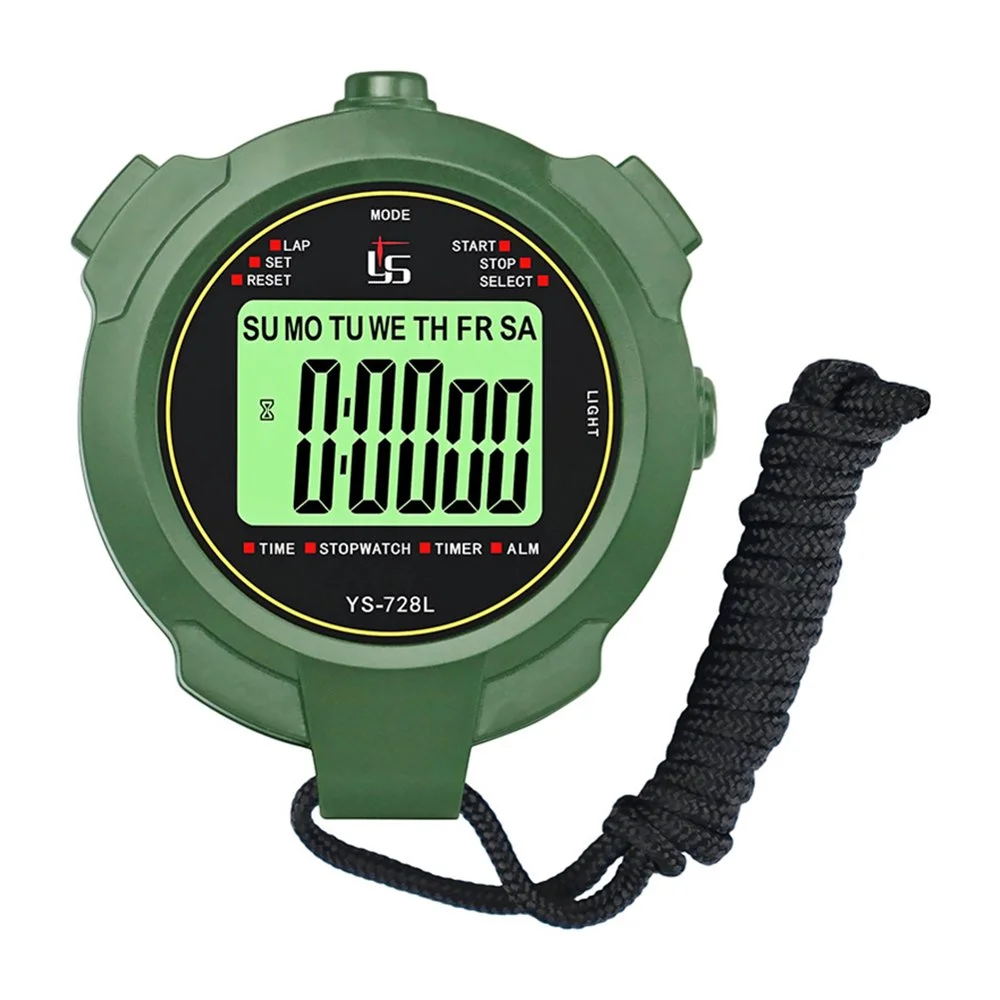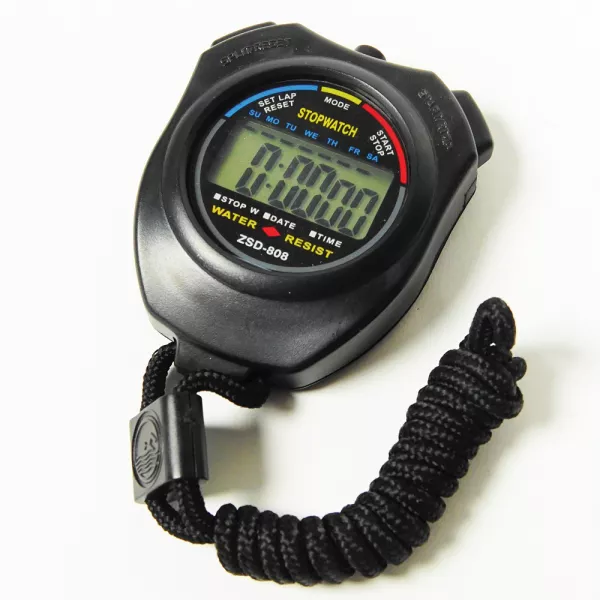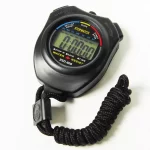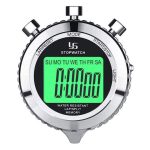Introduction to Stopwatch Usage
When we ask ‘what is a stop watch used for’, it’s clear the applications are diverse. A stopwatch is essential for precise time tracking. Its uses stretch from simple tasks to complex industry needs. People use stopwatches everywhere, in schools, gyms, or laboratories.
A simple push of a button unleashes this tool’s potential. It allows individuals to measure time intervals with ease. Professionals rely on its accuracy for critical operations. It’s not just for sports coaches or runners; even chefs and doctors need it.
Stopwatches encourage efficiency and perfection in various tasks. They help athletes track their seconds, scientists time reactions, and manufacturers maintain production speed. These tools have become a fundamental part of achieving precision in many fields.
Easy to use and portable, stopwatches stand as a handy accessory. For tasks big or small, stopwatches deliver reliable timekeeping. That’s why their usage spans across all sorts of activities. We will dive into each area to showcase just how indispensable stopwatches have become.
History and Evolution of Stopwatches
The journey of the stopwatch is quite remarkable. Before digital technology, early stopwatches were mechanical. They started as simple spring-driven devices. Since their inception in the 19th century, they have evolved significantly. Imagine a time when coaches used sundials or hourglasses. This was before stopwatches came into play for athletic training.
The first stopwatches were bulky and not very accurate. But they sparked a revolution in timekeeping. Over the years, their design became more refined. The accuracy improved drastically. By the 20th century, stopwatches became a crucial tool in sports. They could now measure even the smallest time differences with precision.
The turning point was the introduction of the digital stopwatch. These devices brought a new level of accuracy and ease of use. They featured electronic displays and split-second timing. With the digital era, stopwatches also got new functions. Laps, splits, and memory recalls are now standard features.
Today, stopwatches are more than just timekeepers. They are sophisticated tools. They cater to various needs across industries. Many even have the ability to connect to computers for data analysis. The evolution of stopwatches reflects the human pursuit of precision and efficiency.
Sports and Athletic Training
Stopwatches are vital in the realm of sports and athletic training. Coaches and athletes depend on them to measure performance with precision. A simple push of a button can start or stop the timer, capturing the exact time for sprints, laps, or drills. This information is crucial for athletes aiming to improve their speed and stamina.
In track events, stopwatches record milliseconds. These tiny fractions can determine the outcome of a race. The tool’s accuracy helps in setting benchmarks during training sessions. Athletes monitor their progress by comparing their times against these standards.
Swim coaches also use stopwatches to time each lap during practice. They assess the swimmer’s pace and make adjustments to technique and endurance training.
For team sports, trainers time drills to enhance agility and coordination. They use the data to motivate players, striving for quicker and more efficient movements.
In strength and conditioning, timing rest intervals is key. It ensures that athletes get the right amount of rest between sets for optimal performance.
Overall, stopwatches provide tangible data. Athletes and coaches use this data to strategize and tailor training programs. The aim is to achieve the best possible outcomes in competitions. In sports, ‘what is a stop watch used for’ has a clear answer: it helps sculpt champions, one second at a time.
Scientific Research and Experimentation
In the scientific world, stopwatches serve critical roles. Researchers count on their precision. Stopwatches time experiments where every second counts. They help scientists ensure results are replicable and accurate. Without them, precision in experimental science would suffer.
Stopwatches are key in fields like biology, chemistry, and physics. They measure reaction times and monitor processes. This is vital for studies needing strict timing control. Scientists track changes down to the millisecond.
In chemical reactions, timing is often the difference between success and failure. A stopwatch allows chemists to record reaction rates exactly. They spot trends and understand the kinetics of reactions better.
Physicists use stopwatches for motion studies. They clock the speed of objects and events accurately. This helps in calculating velocities and energies.
Biologists rely on stopwatches to observe behaviors and physiological responses. Timing animal actions or cell divisions is essential. It uncovers patterns in nature.
Even in environmental science, stopwatches are useful. Ecologists time events in ecosystems. They record how long certain processes take within habitats.
Overall, in research, the answer to ‘what is a stop watch used for’ is crucial. It is a tool that shapes our understanding of the natural world. It does so one precise second at a time.
Industrial and Manufacturing Processes
In the industrial sphere, the stopwatch is a cornerstone for productivity. Factories use stopwatches to fine-tune their processes. These tools time assembly lines ensuring products are made swiftly and without delay.
Manufacturers depend on stopwatches for quality control. They track how long each part of the production takes. This way, companies spot bottlenecks and improve workflow. It’s about making more in less time without compromising quality.
For workers, stopwatches time tasks to establish efficiency standards. They gauge how long it takes to complete a job. This helps set realistic goals and measures worker performance.
In inventory management, timing with a stopwatch matters too. It speeds up counting and restocking. This leads to quick turnarounds and better inventory control.
Machine maintenance is another area where stopwatches are key. Technicians use them to time repairs and servicing. This minimizes machine downtime, keeping production lines moving.
So, ‘what is a stop watch used for’ in industry? It streamlines production, aids in maintaining high standards, and enforces time management. Each tick of a stopwatch helps industries stay on the path of efficiency and success.
Healthcare and Medical Timing
In healthcare, stopwatches play a crucial role. Doctors and nurses use them daily. They track patient vitals, like heart rate and breath count. Timing is key during CPR, with each second vital to patient outcomes. In surgeries, stopwatches time procedures, ensuring drugs work for the proper duration.
Medical researchers also rely on stopwatches. They time trials and gather accurate data. This helps when they assess new treatments or drugs.
Stopwatches help in rehabilitation, too. Therapists time patient exercises and recovery tasks. Accurate timing guides treatment plans and tracks progress effectively.
Overall, stopwatches assist in saving lives and improving care. They offer a clear answer to ‘what is a stop watch used for’ in medical settings. They bring precision to care, one critical second at a time.
Culinary and Baking Precision
In the culinary world, stopwatches are key for chefs and bakers. They need precise timing for recipes to turn out just right. In baking, seconds matter. Yeast doughs rise with exact timing, and pastries bake to golden perfection when watched closely. For complex dishes, chefs timer every step. This ensures flavors meld and cook as intended.
Chefs also use stopwatches during food plating. They aim for speed and efficiency, especially in high-paced environments like restaurants. Timing the plating process keeps meals hot and fresh for customers.
Candy making is another area where stopwatches are vital. Sugar reaches critical temperatures within small time windows. Chocolatiers and confectioners must time tempering and setting with care.
For competitive cooking shows, ‘what is a stop watch used for’ has a dramatic answer. Contestants race against the clock, judged on speed and precision. Here, stopwatches add excitement as well as structure.
Overall, stopwatches in the kitchen enforce precision. They help chefs serve up excellence, dish after dish, second by second.
Film Production and Editing
Stopwatches are critical in film production and editing. In these fields, timing is everything. Directors and editors use them to synchronize scenes and manage shot durations. During filming, a stopwatch tracks takes and scene lengths. This ensures scenes don’t run too long or too short. It helps maintain pacing and rhythm, which are key to a film’s success.
Editors rely on stopwatches for precise cuts and transitions. They time each frame to match audio cues and dialogue. This meticulous work impacts the film’s flow and viewer engagement. Timing is also vital for coordinating visual effects with live action. This fusion must be seamless for a believable on-screen world.
Animation is another area where stopwatches play a part. Animators use them to time movements and expressions. The right timing brings characters to life and makes animations more realistic. Timing also matters for stop-motion films. Each frame is carefully captured at timed intervals. This process is tedious, but a stopwatch makes it manageable.
In documentary filmmaking, ‘what is a stop watch used for’ has a clear function. Stopwatches time interviews and real-life events. They help filmmakers document occurrences precisely. This accuracy supports the credibility of factual content.
Overall, stopwatches are indispensable in the movie industry. They help creators capture and convey stories with the right tempo, scene by scene.
Conclusion: The Versatility of Stopwatches
In summary, the simple question ‘what is a stop watch used for’ unlocks a world of precision and efficiency across various domains. From timing sprints to baking pastries, stopwatches are crucial.
This tool’s influence stretches far and wide. It spans sports, science, industry, medicine, and even the culinary arts. In filmmaking, it shapes the essence of stories told frame by frame.
Each industry values the stopwatch for its reliability and precision. Athletes improve performance. Scientists gather accurate data. Manufacturers streamline operations. Medical professionals save lives.
Chefs rely on stopwatches to perfect their craft, and filmmakers capture the art of storytelling. In every industry, stopwatches play a part in achieving excellence.
As we have seen, a stopwatch is not just a timekeeper. It is a partner in pursuit of perfection, marking each important moment with a tick. It supports the quest for efficiency, helping humans continuously push their limits. Indeed, the stopwatch’s role in modern society is indisputable. It proves that sometimes, the smallest tools can make the greatest impact.
